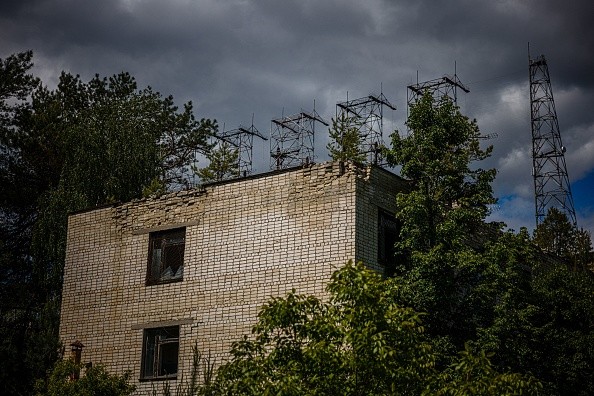The invasion of Ukraine by Russia has highlighted the danger of nuclear conflict. But what effects may contemporary nuclear explosions have on the world?
A recent report that was just released gave sobering facts on the effects of nuclear war on the whole world.
Cheryl Harrison, an assistant professor in the LSU Department of Oceanography & Coastal Sciences, and the other authors of the study used numerous computer simulations to examine the effects of smaller-scale and regional nuclear warfare on the Earth's systems in light of current nuclear warfare capabilities.
According to the Stockholm International Peace Research Institute, more than 13,000 nuclear weapons are now under the possession of nine countries.
How nuclear affect the earth
 (Photo : DIMITAR DILKOFF/AFP via Getty Images)
(Photo : DIMITAR DILKOFF/AFP via Getty Images)

Nuclear firestorms would spew soot and smoke into the upper atmosphere in all of the researchers' simulated scenarios, blocking the Sun and causing crop failures all around the planet.
Average worldwide temperatures would drop by around 13 degrees Fahrenheit in the first month after a nuclear explosion, a greater drop in temperature than during the previous Ice Age.
"It doesn't matter who is bombing whom. It can be India and Pakistan or NATO and Russia. Once the smoke is released into the upper atmosphere, it spreads globally and affects everyone," said Harrison, who has a joint appointment at the LSU Center for Computation & Technology, as per ScienceDaily.
Even when the smoke cleared, the ocean's temperature would swiftly decline and never rise to pre-war levels.
Sea ice blocks important ports, such as Copenhagen, St. Petersburg, and Beijing's Port of Tianjin, by expanding by more than 6 million square miles and reaching depths of 6 feet in certain basins as the world becomes colder.
It would be difficult to bring food and supplies into some places, like Shanghai, where ships are not equipped to deal with sea ice, as the sea ice will expand into generally ice-free coastal regions and obstruct commerce across the Northern Hemisphere.
The marine algae, the base of the marine food web, would be killed by the abrupt decline in light and water temperatures, especially from the Arctic to the North Atlantic and North Pacific seas.
The scientists created a computer model of what would happen to the Earth's systems if the United States and Russia used 4,400 nuclear weapons with a bomb yield of 100 kilotons to attack cities and industrial areas, causing fires to eject 150 teragrams, or more than 330 billion pounds, of smoke and sunlight-absorbing black carbon into the upper atmosphere.
Additionally, they created a computer model of what would occur if Pakistan and India each exploded 500 100-kiloton nuclear bombs, which would release 5 to 47 teragrams, or 11 to 103 billion pounds, of smoke and soot into the upper sky.
Also Read: Survival 101: Here are 7 Animals That Can Survive a Nuclear War
Environmental consequences of nuclear war
There are three main ways that nuclear radiation may harm the environment: incorrect nuclear waste disposal, direct exposure from natural catastrophes, and uranium mining, as per Sciencing.
Nuclear power facilities don't create a lot of pollution, but one of their byproducts is radioactive waste.
Some facilities use landfills or release radioactive waste into lakes and rivers to dispose of it, especially when the radiation levels are below what is detrimental to human health.
Both known and unknown nuclear waste leaks, as well as permanent underground nuclear waste storage facility degradation, are potential environmental hazards.
Similar risks are posed to the environment and nearby ecosystems by disasters, but on a much bigger and more catastrophic scale.
Accidents can occur, and a nuclear power plant catastrophe could have catastrophic effects on the environment and human health.
Disasters can expose people nearby to high radiation levels immediately; wind and water can convey radiation great distances, and radiation can stay in the soil for a very long time.
Utilizing uranium, which businesses must mine from the earth to get, is necessary for nuclear power. The mining of uranium has several negative effects on the environment.
In the vicinity of the mine, certain facilities dispose of the byproducts of uranium mining, known as tailings.
Related article: Earthquakes Detected Near North Korea Nuclear Site as Testing Resumes
© 2024 NatureWorldNews.com All rights reserved. Do not reproduce without permission.


![Climate Change is Reducing Dust Levels Worldwide as Arctic Temperature Warms [Study]](https://1471793142.rsc.cdn77.org/data/thumbs/full/70320/280/157/50/40/climate-change-is-reducing-dust-levels-worldwide-as-arctic-temperature-warms-study.jpg)

![Tsunami Hazard Zones: New US Map Shows Places at Risk of Flooding and Tsunamis Amid Rising Sea Levels [NOAA]](https://1471793142.rsc.cdn77.org/data/thumbs/full/70325/280/157/50/40/tsunami-hazard-zones-new-us-map-shows-places-at-risk-of-flooding-and-tsunamis-amid-rising-sea-levels-noaa.jpg)
